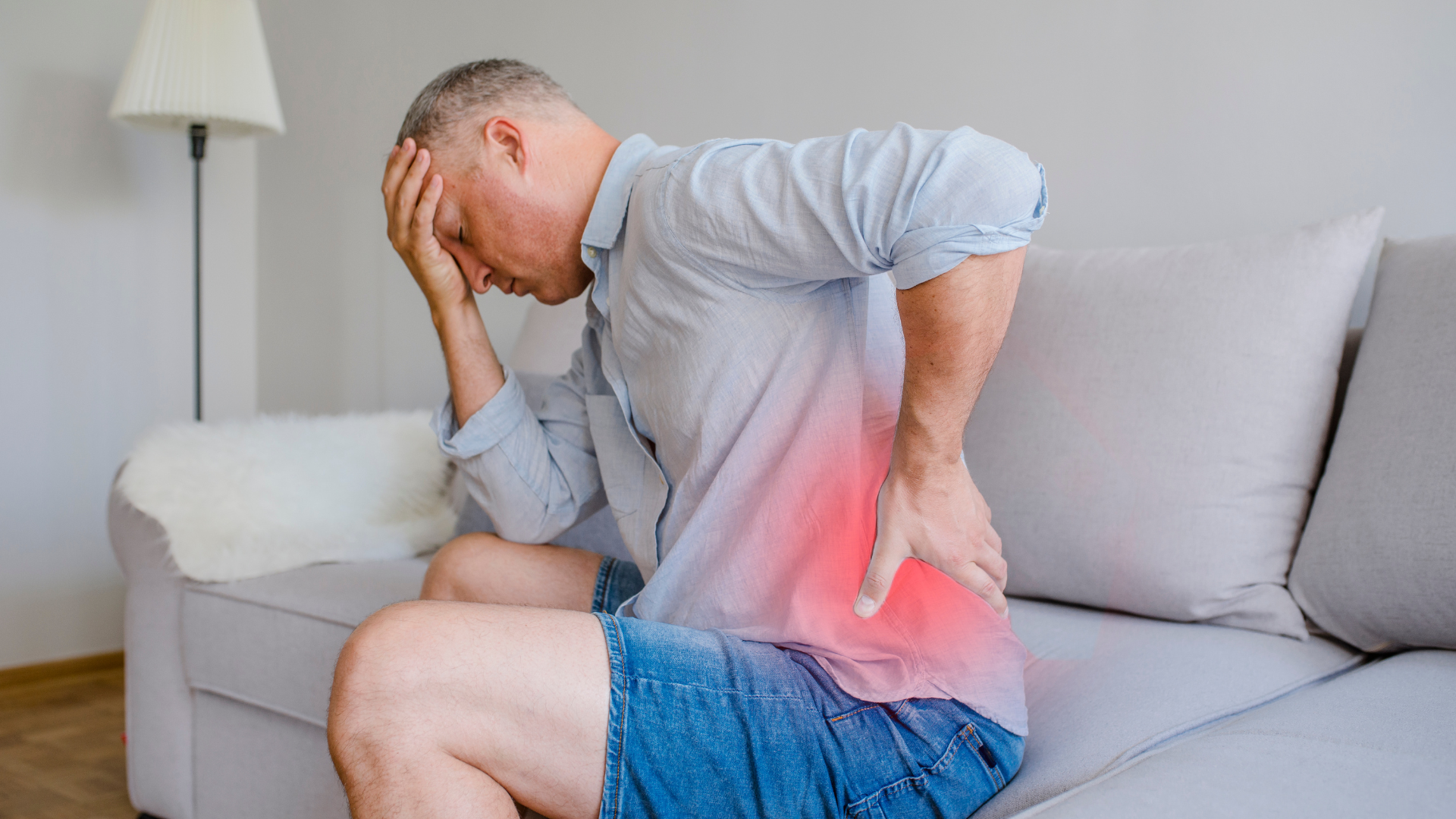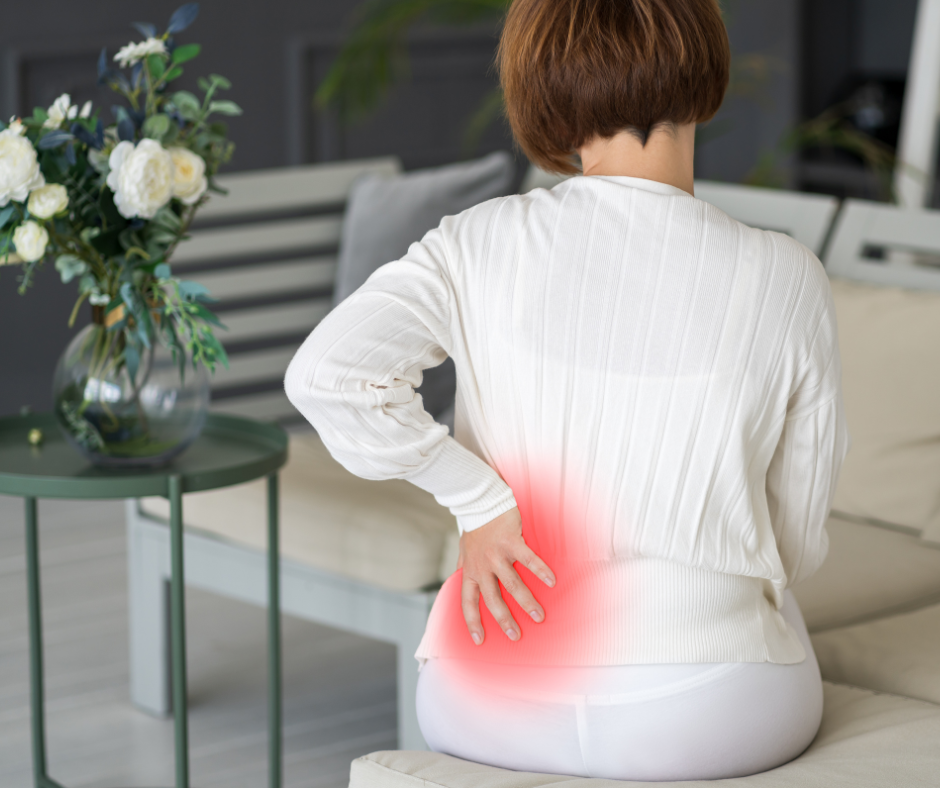Empowering Pain Relief: Transforming the Role of Transcutaneous Electrical Nerve Stimulation (TENS) in Persistent Pain Management and Self-Care
Persistent pain can be challenging to address. Among various non-pharmacological pain treatment strategies, Transcutaneous Electrical Nerve Stimulation (TENS) stands out as one of the most applied modalities.
TENS is known to reduce pain by activating natural pain control mechanisms such as the gate control or diffuse noxious inhibitory controls (Bélanger, 2022; Watson, 2020). Some studies suggest TENS reduces central excitability and restores inhibition with repeated usage (Sluka et al., 2006, 2013; Sluka & Chandran, 2002; C. G. Vance et al., 2014; C. G. T. Vance et al., 2022). By targeting specific neural pathways involved in pain processing, TENS, when used strategically, could have the ability to interrupt maladaptive pain signaling in the neuromatrix, leading to relief from chronic pain conditions.
TENS-induced changes in sensory input can influence the brain's predictions about pain, potentially altering the perception of pain intensity and location (Pietrosimone et al., 2020; Sluka et al., 2013; C. G. Vance et al., 2014; C. G. T. Vance et al., 2022). Research findings have shown that the decrease in pressure pain threshold extends beyond the immediate region of TENS stimulation, along with an increase in tactile acuity. These results suggest a reduction in central excitability and its implications in the pain neuromatrix.(Dailey et al., 2013; Tella et al., 2022; C. G. T. Vance et al., 2012)
Nevertherless, shifts within the physiotherapy field seems to be moving away from passive modalities, potentially overlooking this valuable tool for pain management. Over the last three decades, there has been a noticeable shift in the application of electrotherapy agents from excessive usage to insufficient utilization, accompanied by a significant divergence of viewpoints on their efficacy.
This divergence is largely attributed to the constraints posed by inadequate data from low-quality primary research and the often-inconclusive findings of comprehensive knowledge reviews, which form the bulk of evidence on electrotherapy agents. Consequently, while the prevailing skepticism towards these agents is understandable, it lacks a solid foundation.
A recent meta-analysis of 381 studies for a total 24 532 participants (Johnson et al., 2022) dispels persistent uncertainty regarding the effectiveness of TENS for pain relief. The overall analysis provides moderate evidence, indicating that the application of conventional strong and non-painful TENS on or near the pain site leads to clinically significant reductions in short term pain intensity during and following the application, with no reports of serious adverse events. Patients should be advised to adjust TENS treatment based on their individual needs (Johnson et al., 2022; C. G. T. Vance et al., 2022).
The lack of widespread acceptance of TENS may also stem from the modality not being investigated within the appropriate context. Researchers are recommending evaluating the technology in its intended environment (Sluka et al., 2013; Travers et al., 2020; C. G. T. Vance et al., 2022). While many studies have conducted TENS treatment in clinical settings, the approach may restrict the applicability of findings for the advocacy of TENS as a simple, affordable, and regularly self-administered treatment (Travers et al., 2020). Studies are increasingly exploring its application in self-management and functional improvement (Ammendolia et al., 2019; Artuç et al., 2023; Carzoli et al., 2022; Dailey et al., 2020; French et al., 2024; Mira et al., 2020; Pietrosimone et al., 2020; Shimoura et al., 2019; C. G. Vance et al., 2014).
These studies suggest encouraging outcomes in self-management by alleviating pain, pain-related fatigue, and enhancing function. For instance, TENS has shown potential in alleviating fatigue in individuals with fibromyalgia by reducing the perception of fatigue and enhancing overall energy levels. In this study, active TENS usage led to a significant reduction in movement-evoked fatigue compared to placebo TENS or no TENS groups. This reduction in fatigue levels may be attributed to TENS's modulation of pain pathways and activation of endogenous pain inhibitory mechanisms, which indirectly impact fatigue levels in fibromyalgia patients (Dailey et al., 2020).
Moreover, the same study revealed that active TENS resulted in significant reductions in resting fatigue and the global fatigue index compared to placebo TENS or no TENS groups. These findings suggest that TENS could have a beneficial effect on fatigue levels in individuals with fibromyalgia, potentially by alleviating pain-related fatigue and improving overall energy and functional capacity.
TENS should be considered as an adjunct to standard care for short-term pain relief since it can be a simple and cost-effective proposition as it can be self-administered regularly at home or during daily activities (Johnson et al., 2022; Travers et al., 2020; C. G. T. Vance et al., 2022). To ensure effective self-management, guidance and education from a physiotherapy professional should be provided, promoting evidence based-practice and patient autonomy while considering their biopsychosocial needs, dosimetry, and posology tailored to signs, symptoms, and prognosis (Travers et al., 2020; C. G. T. Vance et al., 2022). Patient maladaptive cognitive behaviours and activity patterns should be taken into consideration during patient education, aiming to guide our patients towards gradual exposure to activities with the use of TENS.
For instance, patients exhibiting kinesiophobia or avoidance tendencies should incorporate TENS during functional graded exposure, whereas those with persistent behavioral patterns might require additional education on task awareness and utilize it during short rest intervals.
When utilized appropriately and in accordance with chronic pain guidelines, TENS can maximize its effectiveness for patients who need pain management tools to improve their functional abilities in daily tasks, household chores, and work. It is our responsibility to equip and educate patients with the necessary tools and education on proper use. Customizing our educational approach to fit their context, their needs, and their objectives by empowering them to take charge of their pain management journey is not just about providing them with tools and techniques; it's about instilling in them the confidence and autonomy to navigate their own path to pain management.
At SET, our priority is to accompany your treatment plans with your patients, focusing on close collaboration to maximize the effectiveness of home treatment. We understand the importance of clear and precise communication to identify and respond to each patient's specific needs.
Through our recommendation tool, we facilitate the establishment of a care plan tailored to your therapeutic goals, thus enhancing rehabilitation outcomes for the benefit of the patient.
To explore how our expertise in functional electrotherapy can enrich your practice and improve your patients' treatment journey, we invite you to contact one of our experts.
Together, let's progress towards a comprehensive approach from the clinic to your patients' homes for optimal results.
Sources:
Ammendolia, C., Côté, P., Rampersaud, Y. R., Southerst, D., Schneider, M., Ahmed, A., Bombardier, C., Hawker, G., & Budgell, B. (2019). Effect of active TENS versus de-tuned TENS on walking capacity in patients with lumbar spinal stenosis : A randomized controlled trial. Chiropractic & Manual Therapies, 27, 24. https://doi.org/10.1186/s12998-019-0245-z
Artuç, Ş. E., Uçkun, A. Ç., Sivas, F. A., Yurdakul, F. G., & Bodur, H. (2023). Comparison of the effects of transcutaneous electrical nerve stimulation and interferential current therapies in central sensitization in patients with knee osteoarthritis. The Korean Journal of Pain, 36(3), 392‑403. https://doi.org/10.3344/kjp.23118
Bélanger, A. (2022). Therapeutic Electrophysical Agents : Evidence Behind Practice : An Evidence-Based Handbook (4e éd.). Wolters Kluwer.
Carzoli, J. P., Alenazy, M., Richmond, S. B., & Enoka, R. M. (2022). Bursting TENS increases walking endurance more than continuous TENS in middle-aged adults. Journal of Electromyography and Kinesiology: Official Journal of the International Society of Electrophysiological Kinesiology, 63, 102644. https://doi.org/10.1016/j.jelekin.2022.102644
Dailey, D. L., Rakel, B. A., Vance, C. G. T., Liebano, R. E., Amrit, A. S., Bush, H. M., Lee, K. S., Lee, J. E., & Sluka, K. A. (2013). Transcutaneous electrical nerve stimulation reduces pain, fatigue and hyperalgesia while restoring central inhibition in primary fibromyalgia. Pain, 154(11), 2554‑2562. https://doi.org/10.1016/j.pain.2013.07.043
Dailey, D. L., Vance, C. G. T., Rakel, B. A., Zimmerman, M. B., Embree, J., Merriwether, E. N., Geasland, K. M., Chimenti, R., Williams, J. M., Golchha, M., Crofford, L. J., & Sluka, K. A. (2020). Transcutaneous Electrical Nerve Stimulation Reduces Movement‐Evoked Pain and Fatigue : A Randomized, Controlled Trial. Arthritis & Rheumatology, 72(5), 824‑836. https://doi.org/10.1002/art.41170
French, H. P., Cunningham, J., Galvin, R., & Almousa, S. (2024). Adjunctive electrophysical therapies used in addition to land-based exercise therapy for osteoarthritis of the hip or knee : A systematic review and meta-analysis. Osteoarthritis and Cartilage Open, 6(2), 100457. https://doi.org/10.1016/j.ocarto.2024.100457
Johnson, M. I., Paley, C. A., Jones, G., Mulvey, M. R., & Wittkopf, P. G. (2022). Efficacy and safety of transcutaneous electrical nerve stimulation (TENS) for acute and chronic pain in adults : A systematic review and meta-analysis of 381 studies (the meta-TENS study). BMJ Open, 12(2), e051073. https://doi.org/10.1136/bmjopen-2021-051073
Mira, T. A. A., Yela, D. A., Podgaec, S., Baracat, E. C., & Benetti-Pinto, C. L. (2020). Hormonal treatment isolated versus hormonal treatment associated with electrotherapy for pelvic pain control in deep endometriosis : Randomized clinical trial. European Journal of Obstetrics & Gynecology and Reproductive Biology, 255, 134‑141. https://doi.org/10.1016/j.ejogrb.2020.10.018
Pietrosimone, B., Luc-Harkey, B. A., Harkey, M. S., Davis-Wilson, H. C., Pfeiffer, S. J., Schwartz, T. A., Nissman, D., Padua, D. A., Blackburn, J. T., & Spang, J. T. (2020). Using TENS to Enhance Therapeutic Exercise in Individuals with Knee Osteoarthritis. Medicine & Science in Sports & Exercise, 52(10), 2086‑2095. https://doi.org/10.1249/MSS.0000000000002353
Shimoura, K., Iijima, H., Suzuki, Y., & Aoyama, T. (2019). Immediate Effects of Transcutaneous Electrical Nerve Stimulation on Pain and Physical Performance in Individuals With Preradiographic Knee Osteoarthritis : A Randomized Controlled Trial. Archives of Physical Medicine and Rehabilitation, 100(2), 300-306.e1. https://doi.org/10.1016/j.apmr.2018.08.189
Sluka, K. A., Bjordal, J. M., Marchand, S., & Rakel, B. A. (2013). What Makes Transcutaneous Electrical Nerve Stimulation Work? Making Sense of the Mixed Results in the Clinical Literature. Physical Therapy, 93(10), 1397‑1402. https://doi.org/10.2522/ptj.20120281
Sluka, K. A., & Chandran, P. (2002). Enhanced reduction in hyperalgesia by combined administration of clonidine and TENS. Pain, 100(1‑2), 183‑190. https://doi.org/10.1016/s0304-3959(02)00294-4
Sluka, K. A., Lisi, T. L., & Westlund, K. N. (2006). Increased Release of Serotonin in the Spinal Cord During Low, But Not High, Frequency Transcutaneous Electric Nerve Stimulation in Rats With Joint Inflammation. Archives of Physical Medicine and Rehabilitation, 87(8), 1137‑1140. https://doi.org/10.1016/j.apmr.2006.04.023
Tella, B. A., Oghumu, S. N., & Gbiri, C. A. O. (2022). Efficacy of Transcutaneous Electrical Nerve Stimulation and Interferential Current on Tactile Acuity of Individuals With Nonspecific Chronic Low Back Pain. Neuromodulation: Technology at the Neural Interface, 25(8), 1403‑1409. https://doi.org/10.1111/ner.13522
Travers, M. J., O’Connell, N. E., Tugwell, P., Eccleston, C., & Gibson, W. (2020). Transcutaneous electrical nerve stimulation (TENS) for chronic pain : The opportunity to begin again. Cochrane Database of Systematic Reviews. https://doi.org/10.1002/14651858.ED000139
Vance, C. G., Dailey, D. L., Rakel, B. A., & Sluka, K. A. (2014). Using TENS for pain control : The state of the evidence. Pain Management, 4(3), 197‑209. https://doi.org/10.2217/pmt.14.13
Vance, C. G. T., Dailey, D. L., Chimenti, R. L., Van Gorp, B. J., Crofford, L. J., & Sluka, K. A. (2022). Using TENS for Pain Control : Update on the State of the Evidence. Medicina (Kaunas, Lithuania), 58(10), 1332. https://doi.org/10.3390/medicina58101332
Vance, C. G. T., Rakel, B. A., Blodgett, N. P., DeSantana, J. M., Amendola, A., Zimmerman, M. B., Walsh, D. M., & Sluka, K. A. (2012). Effects of Transcutaneous Electrical Nerve Stimulation on Pain, Pain Sensitivity, and Function in People With Knee Osteoarthritis : A Randomized Controlled Trial. Physical Therapy, 92(7), 898‑910. https://doi.org/10.2522/ptj.20110183
Watson, T. (2020). Electrotherapy Evidence-Based Practice (13e éd.). Elsevier.
Connectez avec nous sur les médias sociaux















